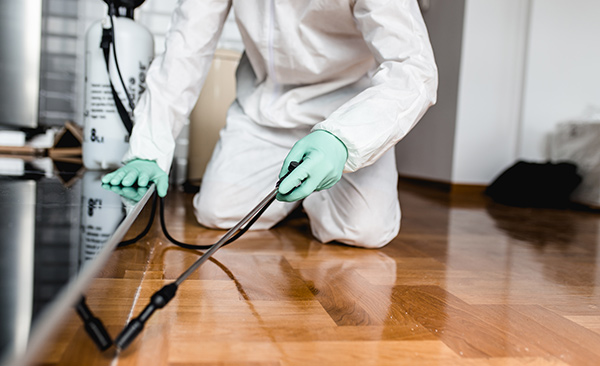Eliminate pests with the best Pest Control available now.
Eco-Friendly Parasite Control Approaches for Handling Wild Animals in Urban Locations
Urban locations often find themselves at the crossway of human task and wildlife, leading to distinct obstacles in parasite management. Green strategies highlight sustainable coexistence, using strategies such as habitat adjustment and natural repellents to alleviate human-wildlife problems. These approaches not just shield the environment but likewise enhance area interaction in wildlife monitoring. As urban populaces remain to expand, comprehending the dynamics of wild animals communications ends up being progressively important. What cutting-edge approaches can be carried out to guarantee both eco-friendly equilibrium and urban safety? Exploring this concern reveals a compelling landscape of potential remedies.
Understanding Urban Wild Animals Dynamics
Comprehending Urban Wildlife Dynamics is important for developing efficient and green pest control methods. Urban areas are significantly becoming environments for various wild animals species, driven by aspects such as habitat fragmentation, food schedule, and human advancement. Identifying these characteristics permits for a nuanced strategy to pest administration that straightens with eco-friendly concepts.
Urban wildlife often consists of types such as raccoons, squirrels, and birds, which adjust to city settings, discovering particular niches in eco-friendly rooms, parks, and also houses. Their visibility can bring about conflicts with humans, especially when they exploit personnels for food and sanctuary. Understanding the habits and ecological duties of these varieties informs strategies that reduce adverse communications while promoting biodiversity.
In addition, recognizing the interdependencies within city ecosystems assists in recognizing important areas for environment conservation and repair. This expertise adds to the growth of incorporated parasite monitoring (IPM) strategies that consider the environmental balance, thereby decreasing reliance on damaging chemicals. By fostering coexistence in between humans and metropolitan wildlife, cities can produce healthier atmospheres that benefit both homeowners and neighborhood communities, leading the way for sustainable metropolitan living.
Natural Repellents and Deterrents
All-natural repellents and deterrents provide a lasting choice to conventional pest control methods by utilizing the power of nature to maintain undesirable types at bay. These environment-friendly options typically use plant-based active ingredients, necessary oils, and various other normally occurring compounds that deter parasites without hurting the environment.
One effective natural repellent is peppermint oil, which is understood to push back rodents and insects. Its solid fragrance is unpleasant to lots of insects, making it a popular choice for city settings. Similarly, vinegar and citrus peels can offer as deterrents, as their solid odors are usually uninviting to different wildlife.
Furthermore, diatomaceous earth is a natural powder that can be spread in areas vulnerable to insect task, effectively drying out and hindering pests without posing risks to non-target types. Garlic sprays and neem oil are identified for their capability to repel a wide range of bugs, consisting of both bugs and larger wildlife.
Implementing these natural repellents not just decreases reliance on chemical pesticides yet also advertises a much healthier city ecological community, cultivating a more well balanced conjunction in between human beings and wildlife. By using these approaches, urban areas can effectively take care of bug populations while reducing environmental influence.
Habitat Modification Techniques
Efficient habitat alteration methods play an essential function in sustainable parasite administration by changing the environment to make it less for pest infestations. By recognizing the ecological characteristics of city locations, residential property owners can apply tactical adjustments that prevent bugs while promoting biodiversity.
(Spider Control)One main technique includes preserving appropriate sanitation. This consists of regular waste elimination, securing trash bins, and removing standing water to minimize reproducing websites for bugs and rodents. Furthermore, landscaping techniques such as choosing indigenous plants can enhance additional info ecological equilibrium, giving habitats for helpful organisms while reducing resources for parasites.
An additional crucial strategy is to seal entry factors in buildings. Evaluating and fixing splits in structures, wall surfaces, and windows can considerably lower bug access. Furthermore, developing physical barriers, such as fencings or plant barriers, can prevent wildlife activity into human-inhabited locations.
Integrated Parasite Administration Practices
Building upon environment modification strategies, integrated pest management (IPM) techniques supply an alternative technique to controlling insect populaces while minimizing ecological impact. IPM combines different strategies, including biological, social, mechanical, and chemical controls, to achieve efficient insect management.
Biological control involves the intro of natural killers or parasites to decrease insect populations. Social methods, such as crop turning and sanitation, disrupt pest life cycles and diminish their habitats - Pest Control. Mechanical controls, like traps and barriers, supply prompt remedy for pest pressures without chemical treatment
Chemical controls are used as a last resource, concentrating on targeted applications that restrict harm to non-target species and the atmosphere. The option of eco-friendly pesticides, when required, is essential to the IPM structure. Additionally, keeping track of parasite populaces and evaluating prospective damages aids educate decision-making, ensuring that interventions are timely and effective.
Community Involvement and Education

(Flea control Port Charlotte)Workshops and informational sessions can furnish homeowners with expertise about native types, habitat conservation, and efficient non-toxic bug monitoring strategies. Cooperation with schools, regional organizations, and federal government agencies further enhances academic outreach, making certain that crucial information reaches diverse audiences.
Additionally, community-led initiatives, such as neighborhood clean-up days and environment repair jobs, not only promote biodiversity yet likewise strengthen community ties. Pest Control. By motivating citizens to share their experiences and monitorings, areas can establish targeted techniques that address specific regional bug problems
Integrating feedback from homeowners right into parasite management intends allows a more receptive and flexible method to wild animals obstacles. Inevitably, educated and involved communities are key to attaining long-lasting success in environment-friendly parasite control, bring about much healthier city environments that value both human and ecological needs.

Verdict
In final thought, green insect control approaches deal lasting solutions for managing city wild animals. By prioritizing habitat modification, making use of natural repellents, and carrying out incorporated parasite monitoring techniques, communities can promote an unified coexistence with local animals.